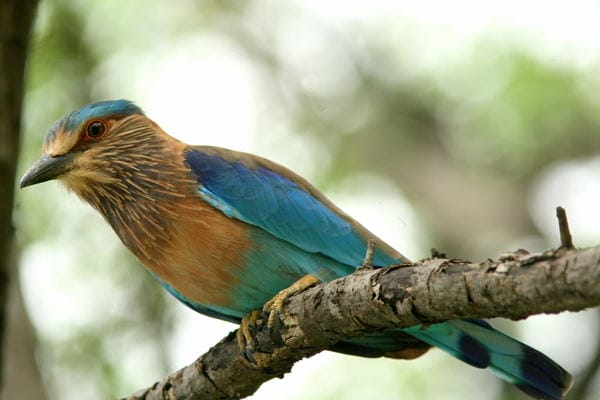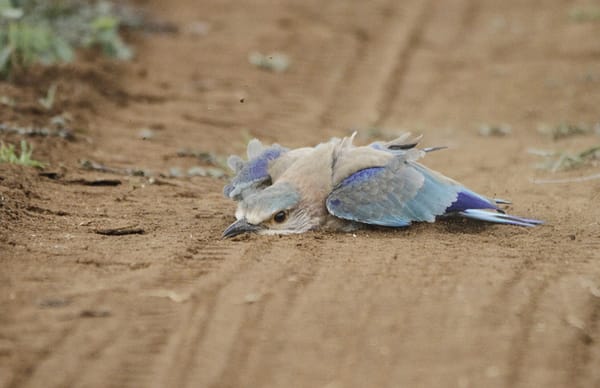Everyone knows of the national bird, the Indian Peacock. But do you know what the State bird is? Karnataka, along with other States (Andhra Pradesh,Bihar, and Odisha) has chosen the Indian Roller. It’s a bird that almost as beautiful as the Peacock, and as interesting too.
These birds can often be seen perched on telephone or telegraph wires, and they feed on insects, spiders, small lizards, snakes and frogs, too.

Pic: Deepa Mohan.
Contrary to the belief that birds are afraid of fire, these birds seem to know that fire attracts insects, and they can often be found swooping on insects near fire. Again, they have learnt to make use of artificial lights and feed on insects attracted to them.
This is a great way to adjust to humans and their lifestyles. My friend Naveen Toppo got this delightful shot, near the Bannerghatta Zoo, of a Roller having a mud bath, which many birds do, to cleanse themselves and get rid of ticks.

Pic: Naveen Kumar Toppo.
The bird has a beautiful aerobatic display, with the twists and turns that give this species its English name. In Karnataka, it is called the “Neel kanth,” a name associated with Shiva, who drank the Halahala poison that stayed in his throat and made it blue.
So, the next time you see a flash of bright blue in the suburbs of our city, look carefully, and you may see our State bird!
Nice! Thanks for the information. Didn’t know it was the state bird. I have seen this bird many times while driving to Mysore. I thought it was called blue jay?
It was, indeed, called the Blue Jay, but since that could confuse it with the American Blue Jay, the name is no longer valid.
lovely pics and nice informative post……
Thank you, Santosh 🙂
awesome column Deepa… “Neelkanth” is really beautiful……… Delightful pic Naveen sir hats off 🙂 🙂 🙂